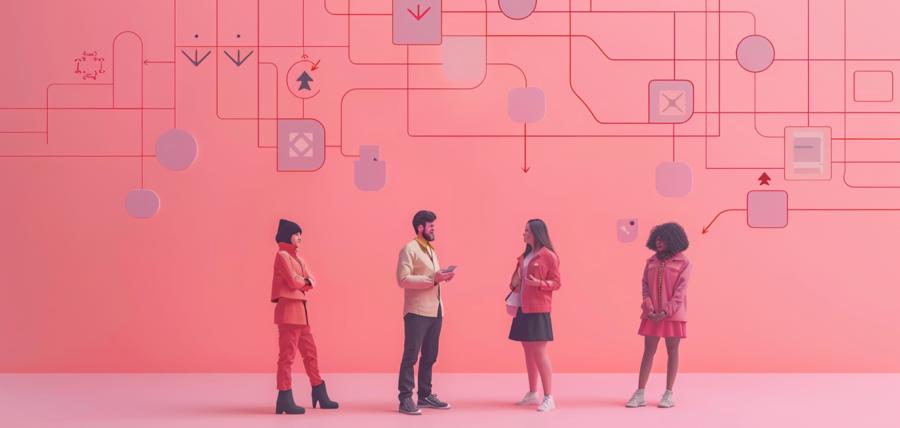Adaptive learning flips that dynamic. Instead of dragging everyone through the same maze at the same pace, it nudges each learner down a path that fits their speed, confidence, and actual performance. Think of it like GPS for learning—except when you miss a turn, it doesn’t reroute you through existential despair.
Less Waste, More Wins
Traditional training tends to treat everyone like they have identical brains, identical roles, and identical caffeine intake. This approach is fine if you’re building IKEA furniture (where everyone should end up with the same chair), but it doesn’t work when you’re developing skills in fast-moving areas like cybersecurity, project delivery, or service management.Research from cybersecurity training programs has shown that fewer, more intelligently chosen branching options—not sprawling decision trees with 18 forks before lunch—lead to better learner outcomes. Why? Because learners get just the right amount of challenge. Not too simple. Not too punishing. Like a well-fitted pair of jeans, but for your brain.
Pre-Check Quizzes That Don’t Feel Like a Tax Audit
Before throwing someone into adaptive content, you need to know where they’re starting from. Enter the pre-check quiz—short, strategic, and (ideally) free from those soul-sapping trick questions designed to catch people out.These quizzes should assess three things:
- What they already know
- How fast they’re processing information
- How confident they are in their answers
Decision Points, Not Endless Menus
After the quiz, the learning path adapts based on how well the learner performs. But this isn’t about giving them an open-world RPG with 900 paths and a mysterious wizard offering hints. Smart adaptive systems offer fewer decision points, designed to help rather than overwhelm. You want the learner to feel guided, not like they’re choosing a Netflix show with their in-laws watching.These branching points can include:
- Skippable content for high performers
- Extra practice loops for uncertain answers
- Refresher modules that don’t insult intelligence
Tracking Progress Without Turning Into Big Brother
Monitoring learning isn’t about looming over someone’s shoulder like an anxious supervisor watching you click “Next.” It’s about subtle, meaningful signals—tracking where someone slows down, where they cruise through, and what kinds of errors they consistently make.Progress tracking in adaptive learning should:
- Measure retention over time, not just course completion
- Adapt recommendations dynamically (yes, mid-course)
- Give facilitators actionable insights, not just charts with colors
What Small Teams Can Do Today
Even if your team isn’t swimming in enterprise-grade platforms with all the bells and whistles, you can start building adaptive principles into your learning culture.Here’s a simple implementation roadmap:
- Design short pre-check quizzes that test core knowledge and confidence
- Group learners into rough pathways (advanced, competent, needs practice)
- Curate content to match these tracks—this can be as simple as adjusting slide decks, assignments, or discussion focus
- Collect informal feedback weekly to fine-tune what’s working (Google Forms are enough)
A Branching Ending
Adaptive learning isn’t about coddling learners or replacing challenge with convenience. It’s about relevance. It’s about friction that’s worth pushing through. In small teams especially—where one disengaged learner can ripple into an entire project—this approach pays off fast.Instead of everyone wandering through generic content and hoping something sticks, adaptive learning sets a compass and adjusts the map in real time. When it’s working well, learners barely notice the scaffolding underneath. They just move forward—with a little more speed, a little more confidence, and a lot fewer groans.
And if that means fewer people get stuck on slide 3 wondering why they’re learning about version control for a tool they don’t use, then that’s a win worth repeating.
Article kindly provided by trainingbytesize.com.au



